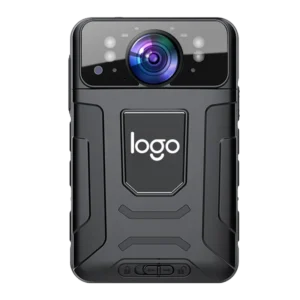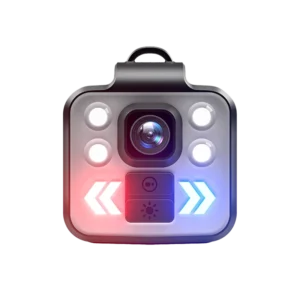With the acceleration of technological development, the rapid development of social production, the gradual renewal of public ideas, and the obvious changes in public demand, various products are being innovated at a high speed. Among them, as an important equipment in law enforcement work, law enforcement recorders have evolved significantly from simple audio and video recording devices to smart terminals that integrate 4G/5G communications, artificial intelligence and other technologies.
Early devices not only had relatively simple functions, but also had only one camera and poor shooting clarity. Nowadays, law enforcement recorders generally support high-definition and even 4K video recording. Some devices have three cameras, namely the main camera, the secondary camera and the AF camera that can be used to shoot ID cards, to maximize the true restoration of the scene. They are also equipped with positioning, intercom, real-time transmission, one-button alarm, intelligent recognition, AI algorithm and other functions.
Main camera
In actual use, the main camera of the law enforcement recorder is mainly used to record comprehensive and clear video of the work site, record various scenes, people’s behaviors and event developments during the work process, and provide primary video evidence for law enforcement activities.
Front camera
The front camera can meet the needs of video calls, video conferences, etc. In some cases where remote communication and collaboration with the command center or other staff is required, face-to-face video communication can be achieved through this camera, which is convenient for timely reporting of on-site conditions, receiving instructions and coordinating work.
AF auto focus camera
The AF autofocus sub-camera supports high-definition photo taking and evidence collection, and can clearly capture specific details, such as details of certificates, documents, and physical evidence, to ensure that the collected evidence is clear and identifiable, which is helpful for subsequent case investigation and handling.
Different cameras play different roles and can help users better carry out related work. However, not all models of law enforcement recorders support three cameras, and some models only support front and rear dual cameras.
More details about body worn camera
What type of cameras do police use?
Officer body-worn cameras (BWCs) are relatively small devices that record interactions between community members (e.g., the public, suspects, and victims) and law enforcement officers.
What are the ethical issues with body-worn cameras?
Body-worn cameras can be used to increase transparency, accountability and trust, as well as provide evidence and protect officers from false accusations. However, body-worn cameras can also raise privacy concerns, create operational challenges or influence the behavior and decision-making of officers and civilians.
What is the thermal imaging camera for law enforcement?
Thermal imaging cameras detect heat, enabling law enforcement professionals to see in complete darkness. Unlike night vision cameras, thermal imaging cameras require no ambient light and retain their clarity in any lighting condition.
What are the uses of infrared photography in law enforcement?
Law Enforcement
Police forces and members of the public can use infrared photography for crime prevention and security purposes. Because infrared cameras have the capability to record in complete darkness, they are very useful for surveillance purposes.




